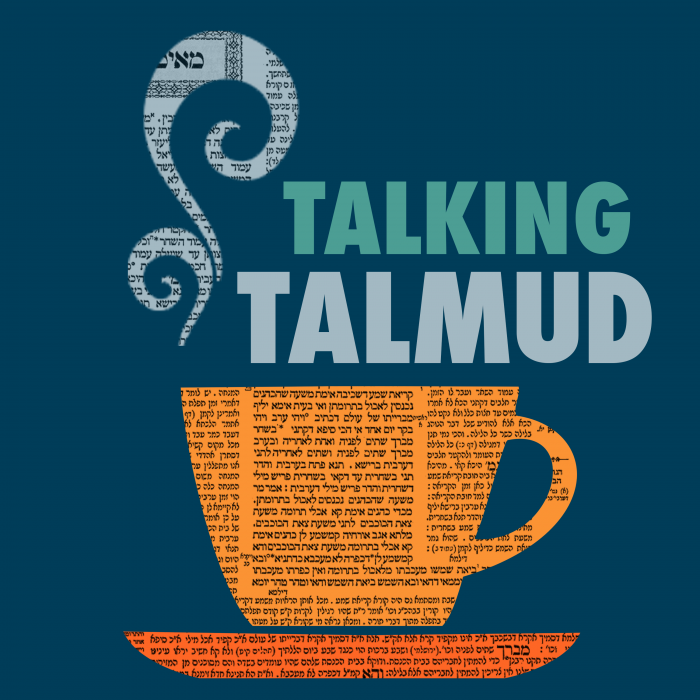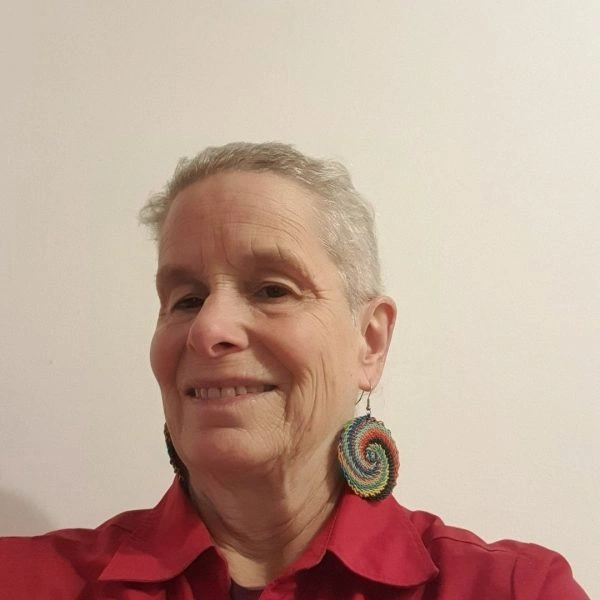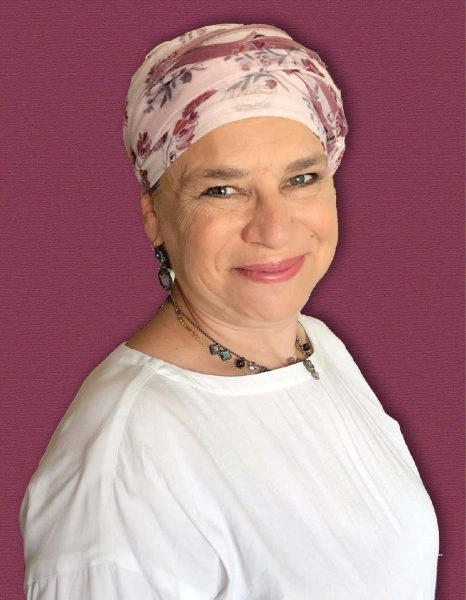Avodah Zarah 25
״וַיִּדֹּם הַשֶּׁמֶשׁ וְיָרֵחַ עָמָד עַד יִקֹּם גּוֹי אֹיְבָיו הֲלֹא הִיא כְתוּבָה עַל סֵפֶר הַיָּשָׁר״, מַאי סֵפֶר הַיָּשָׁר? אָמַר רַבִּי חִיָּיא בַּר אַבָּא אָמַר רַבִּי יוֹחָנָן: זֶה סֵפֶר אַבְרָהָם יִצְחָק וְיַעֲקֹב, שֶׁנִּקְרְאוּ יְשָׁרִים, שֶׁנֶּאֱמַר: ״תָּמֹת נַפְשִׁי מוֹת יְשָׁרִים״.
§ The Gemara cites a series of expositions with regard to what is called the book of Yashar. The verse states: “And the sun stood still, and the moon stayed, until the nation had avenged themselves of their enemies. Is this not written in the book of Yashar”? (Joshua 10:13). The Gemara asks: What is the book of Yashar? Rabbi Ḥiyya bar Abba says that Rabbi Yoḥanan says: This is Genesis, which is the book of Abraham, Isaac, and Jacob, who were called righteous [yesharim], as it is stated: “Let me die the death of the righteous [yesharim]” (Numbers 23:10).
וְהֵיכָא רְמִיזָא? ״וְזַרְעוֹ יִהְיֶה מְלֹא הַגּוֹיִם״, [אֵימָתַי יִהְיֶה מְלֹא הַגּוֹיִם?] בְּשָׁעָה שֶׁעָמְדָה לוֹ חַמָּה לִיהוֹשֻׁעַ, ״וַיַּעֲמֹד הַשֶּׁמֶשׁ בַּחֲצִי הַשָּׁמַיִם וְלֹא אָץ לָבוֹא כְּיוֹם תָּמִים״.
The Gemara asks: And where is it alluded to in Genesis that the sun would stand still for Joshua? The verse states in reference to Ephraim, who was Joshua’s ancestor: “And his seed shall become a multitude of nations” (Genesis 48:19). The Gemara asks: When will he become a multitude of nations? He became a multitude of nations at the time when the sun stood in place for Joshua, as it is written: “And the sun stayed in the midst of heaven, and hastened not to go down for an entire day” (Joshua 10:13).
וְכַמָּה? אָמַר רַבִּי יְהוֹשֻׁעַ בֶּן לֵוִי: עֶשְׂרִים וְאַרְבַּע [שָׁעֵי], אֲזַל שֵׁית וְקָם שֵׁית, אֲזַל שֵׁית וְקָם שֵׁית, כּוּלַּהּ מִלְּתָא כְּיוֹם תָּמִים.
The Gemara inquires: And how much time elapsed before the sun finally set? Rabbi Yehoshua ben Levi said that it took twenty-four hours: It traveled across the sky for six hours and stood still for six hours, and again traveled six hours and stood still for six hours, so that the entire matter lasted the duration of an entire day.
רַבִּי אֶלְעָזָר אָמַר: שְׁלֹשִׁים וְשֵׁית, אֲזַל שֵׁית וְקָם תְּרֵיסַר, אֲזַל שֵׁית וְקָם תְּרֵיסַר, עֲמִידָתוֹ כְּיוֹם תָּמִים. רַבִּי שְׁמוּאֵל בַּר נַחְמָנִי אָמַר: אַרְבָּעִים וּשְׁמוֹנָה, אֲזַל שֵׁית וְקָם תְּרֵיסַר, אֲזַל שֵׁית וְקָם עֶשְׂרִים וְאַרְבְּעָה, [שֶׁנֶּאֱמַר]: ״וְלֹא אָץ לָבוֹא כְּיוֹם תָּמִים״, מִכְּלָל דְּמֵעִיקָּרָא לָאו כְּיוֹם תָּמִים [הֲוָה].
Rabbi Elazar said that it lasted thirty-six hours: The sun traveled for six hours and stood for twelve hours, and again traveled six hours and stood for twelve hours, so that the accumulated time of its suspension was that of an entire day. Rabbi Shmuel bar Naḥmani said: Forty-eight hours elapsed before it set. It traveled six hours and stood for twelve hours, and then traveled six hours and stood for twenty-four hours, as it is stated: “And the sun stayed in the midst of heaven,” and then: “And hastened not to go down for an entire day.” By inference, it can be understood that initially it was not suspended for an entire day. Rather, at first it stood still for twelve hours, and was later suspended for an entire day.
אִיכָּא דְּאָמְרִי, בְּתוֹסֶפְתָּא פְּלִיגִי: רַבִּי יְהוֹשֻׁעַ בֶּן לֵוִי אָמַר: עֶשְׂרִים וְאַרְבְּעָה — אֲזַל שֵׁית וְקָם תְּרֵיסַר, אֲזַל שֵׁית וְקָם תְּרֵיסַר, עֲמִידָתוֹ כְּיוֹם תָּמִים. רַבִּי אֶלְעָזָר אָמַר: שְׁלֹשִׁים וָשֵׁשׁ — אֲזַל שֵׁית וְקָם תְּרֵיסַר, אֲזַל שֵׁית וְקָם עֶשְׂרִים וְאַרְבְּעָה, ״וְלֹא אָץ לָבוֹא כְּיוֹם תָּמִים״.
There are those who say that these Sages do not disagree over how much time had elapsed before the sun set. Rather, they disagree with regard to the additional time by which the day was extended. Rabbi Yehoshua ben Levi said: Twenty-four hours were added to that day, because the sun traveled six hours and stood twelve hours, and again traveled six hours and stood for another twelve hours, which meant that its standing time lasted for an entire day. Rabbi Elazar said that thirty-six hours were added: It traveled six hours and stood for twelve hours, and then traveled six hours and stood for twenty-four more hours. It is with regard to the second suspension that the verse states: “And hastened not to go down for an entire day.”
רַבִּי שְׁמוּאֵל בַּר נַחְמָנִי אָמַר: אַרְבָּעִים וּשְׁמוֹנָה, אֲזַל שֵׁית וְקָם עֶשְׂרִים וְאַרְבְּעָה, אֲזַל שֵׁית וְקָם עֶשְׂרִים וְאַרְבְּעָה, מַקִּישׁ עֲמִידָתוֹ לְבִיאָתוֹ — מָה בִּיאָתוֹ כְּיוֹם תָּמִים, אַף עֲמִידָתוֹ כְּיוֹם תָּמִים.
Rabbi Shmuel bar Naḥmani said: The time the sun stood in place was forty-eight hours in total. The sun traveled six hours and stood twenty-four hours, and then traveled another six hours and stood for another twenty-four hours. His reasoning is that the verse juxtaposes the sun’s suspension to its motion: Just as the sun is in motion for an entire day, so too, its suspension was for an entire day.
תָּנָא: כְּשֵׁם שֶׁעָמְדָה לוֹ חַמָּה לִיהוֹשֻׁעַ, כָּךְ עָמְדָה לוֹ חַמָּה לְמֹשֶׁה וּלְנַקְדִּימוֹן בֶּן גּוּרְיוֹן. יְהוֹשֻׁעַ — קְרָאֵי, נַקְדִּימוֹן בֶּן גּוּרְיוֹן — גְּמָרָא. לְמֹשֶׁה מְנָלַן? אָתְיָא ״אָחֵל״ ״אָחֵל״: כְּתִיב הָכָא ״אָחֵל תֵּת פַּחְדְּךָ״, וּכְתִיב הָתָם בִּיהוֹשֻׁעַ ״אָחֵל גַּדֶּלְךָ״.
It is taught: Just as the sun stood still for Joshua, so too the sun stood still for Moses and for Nakdimon ben Guryon. It is known that it stood still for Joshua from a verse, and it is known that it stood still for Nakdimon ben Guryon by tradition. From where do we derive that it stood still for Moses as well? The Gemara answers: It is derived by means of a verbal analogy between the terms “I will begin” and “I will begin.” The Gemara elaborates: It is written here, with regard to Moses: “I will begin to deliver the dread of you and the fear of you upon the peoples” (Deuteronomy 2:25), and it is written there, with regard to Joshua: “I will begin to magnify you” (Joshua 3:7).
וְרַבִּי יוֹחָנָן אָמַר, אָתְיָא ״תֵּת״ ״תֵּת״: כְּתִיב הָכָא ״אָחֵל תֵּת פַּחְדְּךָ״, וּכְתִיב בִּיהוֹשֻׁעַ ״בְּיוֹם תֵּת ה׳ אֶת הָאֱמֹרִי״.
And Rabbi Yoḥanan says: It is derived from a verbal analogy between the words “delivered” and “delivered.” It is written here, with regard to Moses: “I will begin to deliver the dread of you,” and it is written there, with regard to Joshua: “In the day when the Lord delivered up the Amorites before the children of Israel” (Joshua 10:12).
רַבִּי שְׁמוּאֵל בַּר נַחְמָנִי אָמַר, מִגּוּפֵיהּ דִּקְרָא שָׁמְעַתְּ לֵיהּ: ״אֲשֶׁר יִשְׁמְעוּן שִׁמְעֲךָ וְרָגְזוּ וְחָלוּ מִפָּנֶיךָ״, אֵימָתַי ״רָגְזוּ וְחָלוּ מִפָּנֶיךָ״? בְּשָׁעָה שֶׁעָמְדָה לוֹ חַמָּה לְמֹשֶׁה.
Rabbi Shmuel bar Naḥmani said that there is no need for a verbal analogy, as you can learn this idea from the verse itself: “This day will I begin to deliver the dread of you and the fear of you upon the peoples that are under the whole heaven, who, when they hear the report of you, shall tremble and be in anguish because of you” (Deuteronomy 2:25). When was the fulfillment of the prophecy that all the nations “shall tremble and be in anguish because of you”? It was at the time when the sun stood still for Moses.
מֵיתִיבִי: ״וְלֹא הָיָה כַּיּוֹם הַהוּא לְפָנָיו וְאַחֲרָיו״! אִיבָּעֵית אֵימָא: שָׁעוֹת הוּא דְּלָא הֲווֹ (נפיש) [נְפִישָׁן] כּוּלֵּי הַאי, וְאִיבָּעֵית אֵימָא: אַבְנֵי בָרָד לָא הֲווֹ, דִּכְתִיב: ״וַיְהִי בְּנֻסָם מִפְּנֵי בְּנֵי יִשְׂרָאֵל הֵם בְּמוֹרַד בֵּית חוֹרֹן וַה׳ הִשְׁלִיךְ עֲלֵיהֶם אֲבָנִים גְּדֹלוֹת מִן הַשָּׁמַיִם עַד עֲזֵקָה וַיָּמֻתוּ״.
The Gemara raises an objection: After the sun stood still, the verse states: “And there was no day like that before it or after it” (Joshua 10:14). If there was no day comparable to it, how can it be asserted that the sun stood still for Moses as well? The Gemara answers: If you wish, say that the number of hours the sun stood still for Moses were not as many as in the case of Joshua. And if you wish, say instead: When the sun stood still for Moses there were no hailstones, whereas in the case of Joshua there were hailstones, as it is written: “And it came to pass, as they fled from before the children of Israel, while they were in the descent of Beth Horon, that the Lord cast down great stones from heaven upon them into Azeka and they died” (Joshua 10:11).
כְּתִיב ״וַיֹּאמֶר לְלַמֵּד בְּנֵי יְהוּדָה קָשֶׁת הִנֵּה כְתוּבָה עַל סֵפֶר הַיָּשָׁר״, מַאי ״סֵפֶר הַיָּשָׁר״? אָמַר רַבִּי חִיָּיא בַּר אַבָּא אָמַר רַבִּי יוֹחָנָן: זֶה סֵפֶר אַבְרָהָם יִצְחָק וְיַעֲקֹב, שֶׁנִּקְרְאוּ ״יְשָׁרִים״, דִּכְתִיב בְּהוּ ״תָּמֹת נַפְשִׁי מוֹת יְשָׁרִים וּתְהִי אַחֲרִיתִי כָּמוֹהוּ״.
The Gemara cites another exposition with regard to the book of Yashar. It is written: “And said: To teach the sons of Judah the bow. Behold, it is written in the book of Yashar” (II Samuel 1:18). The Gemara again asks: What is the book of Yashar? Rabbi Ḥiyya bar Abba says that Rabbi Yoḥanan says: This is the book of Abraham, Isaac, and Jacob, who were called righteous [yesharim], as it is written with regard to them: “Let me die the death of the righteous [yesharim] and let my end be like his” (Numbers 23:10).
וְהֵיכָא רְמִיזָא? ״יְהוּדָה אַתָּה יוֹדוּךָ אַחֶיךָ יָדְךָ בְּעֹרֶף אֹיְבֶיךָ״, וְאֵיזוֹ הִיא מִלְחָמָה שֶׁצְּרִיכָה יָד כְּנֶגֶד עוֹרֶף? הֱוֵי אוֹמֵר: זוֹ קֶשֶׁת.
The Gemara further analyzes the verse in Samuel: And where is it alluded to in Genesis that Judah must be taught to use the bow? The verse states: “Judah, your brothers shall praise you; your hand shall be on the nape of your enemies” (Genesis 49:8). The Gemara explains: What is the form of warfare that requires one’s hand to be held opposite the nape? You must say that this is referring to the use of a bow. This is the referent of the verse in Samuel.
רַבִּי אֶלְעָזָר אוֹמֵר: זֶה סֵפֶר מִשְׁנֵה תּוֹרָה, וְאַמַּאי קָרוּ לֵיהּ ״סֵפֶר הַיָּשָׁר״? דִּכְתִיב: ״וְעָשִׂיתָ הַיָּשָׁר וְהַטּוֹב בְּעֵינֵי ה׳״. וְהֵיכָא רְמִיזָא? ״יָדָיו רַב לוֹ״, וְאֵיזוֹ הִיא מִלְחָמָה שֶׁצְּרִיכָה שְׁתֵּי יָדַיִם? הֱוֵי אוֹמֵר: זוֹ קֶשֶׁת.
The Gemara cites a different interpretation: Rabbi Elazar says that the book of Yashar is the book of Deuteronomy. And why did they call it the book of Yashar? As it is written: “And you shall do that which is right [yashar] and good in the sight of the Lord” (Deuteronomy 6:18). And where is it alluded to in Deuteronomy that Judah must be taught to use the bow? The verse states: “And this for Judah, and he said: Hear, Lord, the voice of Judah, and bring him in unto his people; his hands shall contend for him” (Deuteronomy 33:7). What is the form of warfare that requires the use of two hands? You must say that this is referring to the use of a bow. This is the referent of the verse in Samuel.
רַבִּי שְׁמוּאֵל בַּר נַחְמָנִי אָמַר: זֶה סֵפֶר שׁוֹפְטִים, וְאַמַּאי קָרוּ לֵיהּ ״סֵפֶר הַיָּשָׁר״? דִּכְתִיב: ״בַּיָּמִים הָהֵם אֵין מֶלֶךְ בְּיִשְׂרָאֵל אִישׁ הַיָּשָׁר בְּעֵינָיו יַעֲשֶׂה״, וְהֵיכָא רְמִיזָא? ״לְמַעַן דַּעַת דֹּרוֹת בְּנֵי יִשְׂרָאֵל לְלַמְּדָם מִלְחָמָה״, וְאֵיזוֹ הִיא מִלְחָמָה שֶׁצְּרִיכָה לִימּוּד? הֱוֵי אוֹמֵר: זוֹ קֶשֶׁת.
The Gemara provides yet another explanation: Rabbi Shmuel bar Naḥmani says that the book of Yashar is the book of Judges. And why did they call it the book of Yashar? As it is written: “In those days there was no king in Israel; every man did that which was right [yashar] in his own eyes” (Judges 17:6). And where is it alluded to in Judges that Judah must be taught to use the bow? The verse states: “Only that the generations of the children of Israel might know, to teach them war” (Judges 3:2). What is the form of warfare that requires teaching? You must say that this is referring to the use of a bow. This is the referent of the verse in Samuel.
וּמְנָלַן דְּבִיהוּדָה כְּתִיב? דִּכְתִיב: ״מִי יַעֲלֶה לָּנוּ בַתְּחִלָּה אֶל הַכְּנַעֲנִי לְהִלָּחֵם בּוֹ, וַיֹּאמֶר ה׳ יְהוּדָה יַעֲלֶה״.
The Gemara asks: And from where do we derive that Judges 3:2 is written in reference to Judah? We derive it as it is written: “The children of Israel asked the Lord, saying: Who shall go up for us first against the Canaanites, to fight against them? And the Lord said: Judah shall go up” (Judges 1:1–2).
״וַיָּרֶם הַטַּבָּח אֶת הַשּׁוֹק וְהֶעָלֶיהָ וַיָּשֶׂם לִפְנֵי שָׁאוּל״, מַאי ״וְהֶעָלֶיהָ״? רַבִּי יוֹחָנָן אוֹמֵר: שׁוֹק וְאַלְיָה. מַאי ״וְהֶעָלֶיהָ״? דִּמְסַמְּכָא שׁוֹק לְאַלְיָה.
§ The Gemara cites another dispute between the same amora’im. The verse states: “And the cook took up the thigh, and that which was upon it [vehe’aleha], and set it before Saul” (I Samuel 9:24). To what does the term “and that which was upon it” refer? Rabbi Yoḥanan says: It refers to the thigh and the tail. The Gemara asks: What is the reason that the tail is referred to as: “And that which was upon it”? The reason is that the thigh supports the tail, as it rests upon it.
וְרַבִּי אֶלְעָזָר אוֹמֵר: שׁוֹק וְחָזֶה, מַאי ״וְהֶעָלֶיהָ״? דְּמַחֵית לֵהּ לְחָזֶה עִילָּוֵיהּ דְּשׁוֹק כִּי בָעֵי אֹנוֹפֵי, וּמֹנְפִי לֵיהּ. וְרַבִּי שְׁמוּאֵל בַּר נַחְמָנִי אָמַר: שׁוֹק וְשׁוֹפִי, מַאי ״וְהֶעָלֶיהָ״? שׁוֹפִי עִילָּוֵיהּ דְּשׁוֹק קָאֵי.
And Rabbi Elazar says: The verse refers to the thigh and the breast. What is the reason that the breast is referred to as: “And that which was upon it”? The reason is that one places the breast upon the thigh when it requires sacrificial waving, and waves it. And Rabbi Shmuel bar Naḥmani says: The verse refers to the thigh and the cap [shofi], i.e., the very top part of the leg. What is the reason that the cap is referred to as: “And that which was upon it”? It is because it is referring to the cap that stands above the thigh.
לֹא תִּתְיַיחֵד אִשָּׁה עִמָּהֶם, בְּמַאי עָסְקִינַן? אִילֵימָא בְּחַד, דִּכְוָותַהּ גַּבֵּי יִשְׂרָאֵל מִי שְׁרֵי? וְהָתְנַן: ״לֹא יִתְיַיחֵד אִישׁ אֶחָד עִם שְׁתֵּי נָשִׁים״!
§ The mishna teaches that a woman may not seclude herself with gentiles. The Gemara asks: What are we dealing with? If we say that we are dealing with a woman who secludes herself with one gentile, is this permitted in the corresponding situation involving a Jew? But didn’t we learn in a mishna (Kiddushin 80b): One man may not seclude himself even with two women? It is certainly forbidden for one man to be secluded with one woman.
אֶלָּא בִּתְלָתָא. דִּכְוָותַהּ גַּבֵּי יִשְׂרָאֵל, בִּפְרוּצִים מִי שְׁרֵי? וְהָתְנַן: ״אֲבָל אִשָּׁה אַחַת מִתְיַיחֶדֶת עִם שְׁנֵי אֲנָשִׁים״, וְאָמַר רַב יְהוּדָה אָמַר שְׁמוּאֵל: לֹא שָׁנוּ אֶלָּא בִּכְשֵׁרִים, אֲבָל בִּפְרוּצִים אֲפִילּוּ עֲשָׂרָה נָמֵי לָא. מַעֲשֶׂה הָיָה וְהוֹצִיאוּהָ עֲשָׂרָה בְּמִטָּה!
Rather, the mishna is referring to a case in which a woman secludes herself with three gentiles. The Gemara asks: Is this permitted in the corresponding situation involving Jews steeped in sexual immorality? But didn’t we learn in a mishna (Kiddushin 80b): But one woman may be secluded with two men; and Rav Yehuda says that Shmuel says: They taught this halakha only with regard to men of fit morals; but with regard to those steeped in sexual immorality, she may not be secluded even with ten men. There was an incident where ten men carried a woman out of the city on a bier, as though she were dead, and they engaged in intercourse with her.
לָא, צְרִיכָא בְּאִשְׁתּוֹ עִמּוֹ. גּוֹי אֵין אִשְׁתּוֹ מְשַׁמַּרְתּוֹ, אֲבָל יִשְׂרָאֵל אִשְׁתּוֹ מְשַׁמַּרְתּוֹ.
The Gemara answers: No, the ruling of the mishna here is necessary in a case where the gentile’s wife is with him. The difference between the two rulings is that in the case of a gentile, it is assumed that his wife does not guard him against sinning with another, but with regard to a Jew, his wife does guard him against sinning with another.
וְתִיפּוֹק לֵיהּ מִשּׁוּם שְׁפִיכוּת דָּמִים! אָמַר רַבִּי יִרְמְיָה: בְּאִשָּׁה חֲשׁוּבָה עָסְקִינַן, דְּמִירַתְתִי מִינַּהּ. רַב אִידִי אָמַר: אִשָּׁה כְּלֵי זַיְינָהּ עָלֶיהָ.
§ The mishna teaches that a woman may not seclude herself with a gentile due to the concern that they might engage in illicit sexual relations. The Gemara challenges: And let us derive that a woman may not seclude herself with a gentile due to the concern about bloodshed. The Gemara cites two responses. Rabbi Yirmeya says: We are dealing with a distinguished woman, whom gentiles will not kill, as they are fearful of her status. Nevertheless, there is a concern with regard to illicit sexual relations. Rav Idi bar Avin says: A woman carries her weapons upon her. In other words, there is no need to be concerned that a woman might be killed by gentiles; rather, the very fact that she is a woman protects her, as they would most likely rape her and not kill her.
מַאי בֵּינַיְיהוּ? אִיכָּא בֵּינַיְיהוּ: אִשָּׁה חֲשׁוּבָה בֵּין אֲנָשִׁים, וְשֶׁאֵינָהּ חֲשׁוּבָה בֵּין הַנָּשִׁים.
The Gemara asks: What is the practical difference between these two answers? The Gemara answers: The difference between them is with regard to a woman who is distinguished among men due to her political position, but is not distinguished among the women, i.e., she is unattractive. According to Rabbi Yirmeya, there is no concern that she will be killed, as she is distinguished, nor is there a concern that they will engage in illicit sexual relations. Therefore, it would be permitted for her to seclude herself with them. By contrast, as Rav Idi bar Avin stated his explanation in general terms, he evidently holds that the concern of illicit sexual relations always applies, regardless of the woman’s appearance.
תַּנְיָא כְּוָותֵיהּ דְּרַב אִידִי בַּר אָבִין: הָאִשָּׁה, אַף עַל פִּי שֶׁהַשָּׁלוֹם עִמָּהּ, לֹא תִּתְיַיחֵד עִמָּהֶן, מִפְּנֵי שֶׁחֲשׁוּדִין עַל הָעֲרָיוֹת.
The Gemara notes that it is taught in a baraita in accordance with the opinion of Rav Idi bar Avin: With regard to a woman, even though her protection accompanies her, i.e., she is not in danger of being killed, she may not seclude herself with gentiles because they are suspected of engaging in forbidden sexual relations.
לֹא יִתְיַיחֵד אָדָם עִמָּהֶן. תָּנוּ רַבָּנַן: יִשְׂרָאֵל שֶׁנִּזְדַּמֵּן לוֹ גּוֹי בַּדֶּרֶךְ — טוֹפְלוֹ לִימִינוֹ. רַבִּי יִשְׁמָעֵאל בְּנוֹ שֶׁל רַבִּי יוֹחָנָן בֶּן בְּרוֹקָה אוֹמֵר: בְּסַיִיף — טוֹפְלוֹ לִימִינוֹ, בְּמַקֵּל — טוֹפְלוֹ לִשְׂמֹאלוֹ.
§ The mishna further teaches that a person may not seclude himself with gentiles because they are suspected of bloodshed. The Sages taught: A Jew who encounters a gentile on the road and continues his travels with him should position the gentile to his right, so that the Jew’s dominant hand is closest to the gentile, which will enable him to defend himself against a potential attack. Rabbi Yishmael, son of Rabbi Yoḥanan ben Beroka, says: If the gentile is armed with a sword, the Jew positions him to his right, because a blade is usually carried on one’s left side. But if the gentile is armed with a stick, the Jew should steer him to his left, as a stick is usually carried in one’s right hand. By walking on the same side as the gentile’s weapon, the Jew can best prevent him from drawing it.
הָיוּ עוֹלִין בְּמַעֲלֶה אוֹ יוֹרְדִין בִּירִידָה, לֹא יְהֵא יִשְׂרָאֵל לְמַטָּה וְגוֹי לְמַעְלָה, אֶלָּא יִשְׂרָאֵל לְמַעְלָה וְגוֹי לְמַטָּה, וְאַל יָשׁוּחַ לְפָנָיו, שֶׁמָּא יָרוֹץ אֶת גּוּלְגׇּלְתּוֹ.
The Gemara continues: If the Jew and gentile were ascending an incline or descending a decline, the Jew should not be positioned below while the gentile is above, so that the gentile will not have the advantage of height if he decides to attack. Rather, the Jew should be located above while the gentile is below. And the Jew should not bend down before him, lest the gentile break his skull.
שְׁאָלוֹ לְהֵיכָן הוֹלֵךְ — יַרְחִיב לוֹ אֶת הַדֶּרֶךְ, כְּדֶרֶךְ שֶׁעָשָׂה יַעֲקֹב אָבִינוּ לְעֵשָׂו הָרָשָׁע, דִּכְתִיב: ״עַד אֲשֶׁר אָבֹא אֶל אֲדֹנִי שֵׂעִירָה״,
Furthermore, if the gentile asks him where he is going, the Jew should extend the journey when relating his destination to him, i.e., he should claim that he is traveling to a place beyond his actual destination, in the manner that Jacob our father did to the wicked Esau. As it is written that Jacob said to Esau: “Let my lord pass over before his servant and I will journey on gently, according to the pace of the cattle that are before me and according to the pace of the children, until I come unto my lord unto Seir” (Genesis 33:14).
וּכְתִיב: ״וְיַעֲקֹב נָסַע סֻכֹּתָה״.
The Gemara continues: And it is written subsequently: “And Jacob journeyed to Succoth, and built himself a house” (Genesis 33:17). Rather than meeting Esau in Seir, Jacob traveled to the nearer location of Succoth. Telling a gentile that one is traveling to a farther destination might cause the gentile to defer his attack due to the assumption that he has a longer period of time to plan and execute it. As a result of the delay, the Jew has a better chance of reaching his true destination safely.
מַעֲשֶׂה בְּתַלְמִידֵי רַבִּי עֲקִיבָא שֶׁהָיוּ הוֹלְכִים לִכְזִיב, פָּגְעוּ בָּהֶן לִיסְטִים, אָמְרוּ לָהֶן: לְאָן אַתֶּם הוֹלְכִים? אָמְרוּ לָהֶן: לְעַכּוֹ. כֵּיוָן שֶׁהִגִּיעוּ לִכְזִיב, פֵּירְשׁוּ. אָמְרוּ לָהֶן: תַּלְמִידֵי מִי אַתֶּם? אָמְרוּ לָהֶן: תַּלְמִידֵי רַבִּי עֲקִיבָא. אָמְרוּ לָהֶן: אַשְׁרֵי רַבִּי עֲקִיבָא וְתַלְמִידָיו שֶׁלֹּא פָּגַע בָּהֶן אָדָם רַע מֵעוֹלָם.
The Gemara illustrates this idea through a relevant story. An incident occurred involving several students of Rabbi Akiva who were traveling to Keziv. Along the way, bandits encountered them and said to them: Where are you going? Rabbi Akiva’s students said to them: To Akko. Once they reached Keziv, Rabbi Akiva’s students separated from the bandits. At this point the bandits said to them: Whose students are you? The students said to the bandits: We are students of Rabbi Akiva. The bandits said to them: Fortunate are Rabbi Akiva and his students, as they were never harmed by an evil person. The bandits were impressed with the wisdom that the students demonstrated in evading harm.
רַב מְנַשֶּׁה הֲוָה אָזֵל
The Gemara relates another incident: Rav Menashe was traveling





















